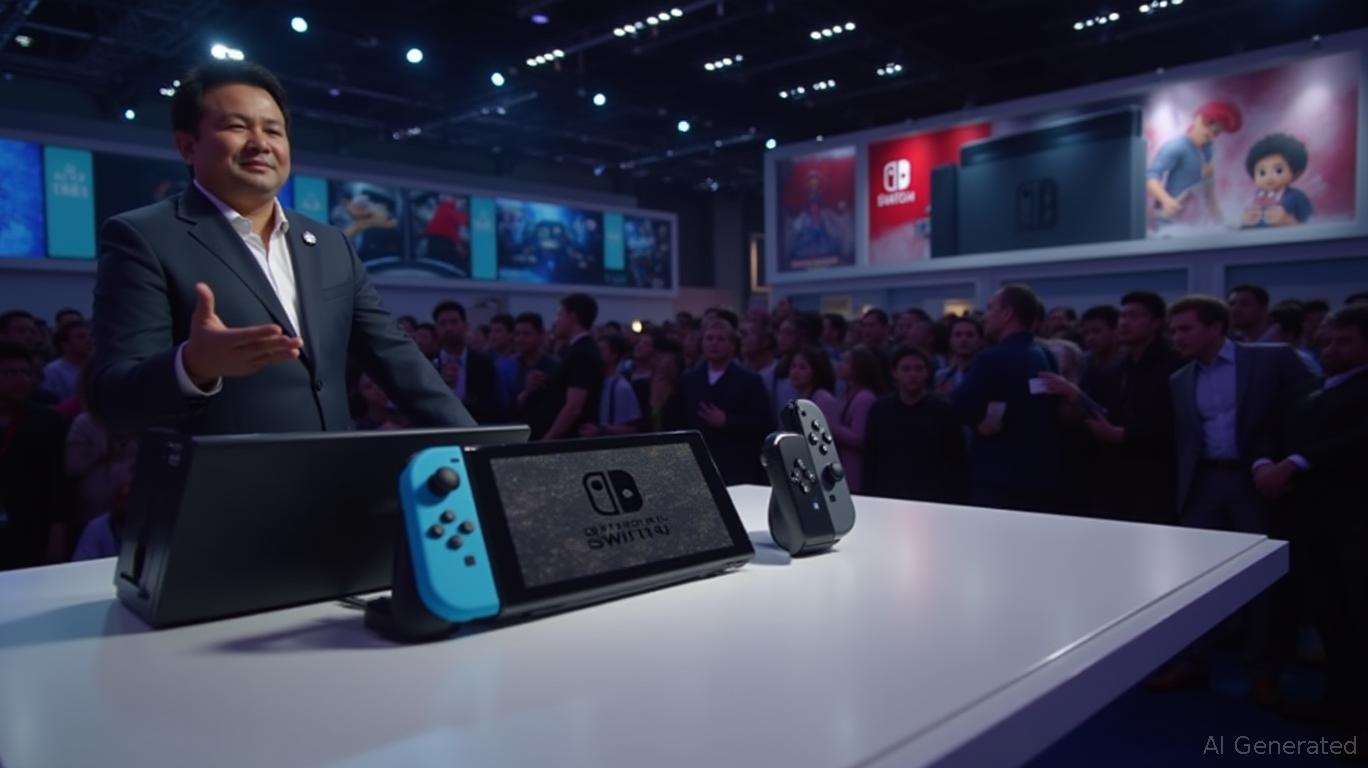Nintendo Switch 2: A Record-Breaking Launch and the Path to Sustainable Dominance
Nintendo's new flagship console, the Switch 2, has delivered a historic launch, selling over 3.5 million units globally in its first four days—a milestone that positions the company to exceed its 15 million annual sales target and reinforces its strategic dominance in the gaming sector. This article explores how Nintendo is leveraging sustainable demand, supply chain resilience, and strategic pricing to carve out long-term growth opportunities, making it a compelling defensive growth play in a sector increasingly challenged by economic uncertainty.

1. The Catalyst: 3.5M Units in 4 Days—A New Benchmark for Demand
The Switch 2's launch obliterated previous records, surpassing the PlayStation 4's 1 million-unit debut day sales in 2013. Analysts at Ampere Analysis project the console could reach 4.5 million units in its first two months, outpacing even the PlayStation 5's trajectory. The Mario Kart World bundle—priced at $499.99—acted as a demand magnet, with the game's 24-player open-world innovation and GameChat feature (free until March 2026) driving a 95% attach rate of the title to hardware sales. This combination of premium hardware and exclusive software has created a flywheel effect: early buyers are incentivized to stay engaged, while future software releases like Donkey Kong Bananza (July 2025) will further solidify the ecosystem.
Nintendo's 15 million annual sales target is now within striking distance. While the company is cautious—accounting for tariff risks and economic headwinds—analysts like Serkan Toto of Kantan Games predict sales could surge to 20 million units by March 2026. The Switch 2's backward compatibility with 95% of original Switch games also mitigates risks of a fragmented user base, ensuring a seamless transition for existing players.
2. Supply Chain Mastery: Lessons Learned from Past Shortages
Nintendo's history of supply chain struggles—most notably the original Switch shortages during the pandemic—has spurred proactive adjustments. The Switch 2 is manufactured in Vietnam, where Nintendo has ramped up production capacity to 3.5 million units monthly, a 40% increase over prior forecasts. This contrasts sharply with Sony's PlayStation 5 struggles, which faced global shortages for three years due to component bottlenecks. Nintendo's vertical integration with key suppliers, including Foxconn for assembly and TSMC for chips, has created a buffer against disruptions, while its hybrid console design (portable and docked) avoids reliance on scarce GPU stock.
The chart above illustrates Nintendo's outperformance amid sector volatility, reflecting investor confidence in its supply chain agility. While U.S. tariffs on Vietnamese imports remain a risk, Nintendo's diversification into Mexico and Thailand for future production could mitigate costs.
3. Pricing Power and Margin Resilience
Nintendo's decision to raise the Switch 2's price to $450—a $150 increase over its predecessor—has sparked debates, but the premium is justified by its 4K docked capabilities, 1080p screen, and GameChat functionality. The Mario Kart World bundle effectively segments the market: gamers seeking exclusives pay a premium, while others opt for the base model at $449.99. Analysts at Toyo Securities highlight that software sales—projected to hit $2 billion in 2025—will further bolster margins, with $8–$10 billion in long-term content opportunities from first-party titles and third-party partnerships.
Nintendo's Nintendo Switch Online (NSO) subscription ($20/year) adds recurring revenue, now essential for 60% of users. The GameChat feature's post-2026 NSO requirement will lock in subscribers, creating a moat against competitors like PlayStation Plus and Xbox Game Pass.
4. Long-Term Opportunities: Cloud Gaming and Ecosystem Stickiness
Nintendo's vision extends beyond hardware. The Switch 2's cloud gaming partnerships—including collaborations with Google Stadia and Amazon Luna—will allow it to tap into streaming markets, reducing hardware dependency. Meanwhile, third-party support is growing: 24% of Switch 2 games are now from external developers, up from 15% for the original Switch. Titles like Starfield and Resident Evil 4 Remake have shown strong sales, proving Nintendo's platform's broader appeal.
The Donkey Kong Bananza (July 2025) and planned Zelda: Tears of the Kingdom port will keep the Switch 2's software pipeline robust, ensuring users stay engaged. Ampere Analysis estimates the console's lifecycle sales could reach 104 million units by 2030—surpassing even the original Switch's 152 million total if sustained innovation continues.
Investment Thesis: A Defensive Growth Play with Upside
Nintendo's Switch 2 launch is more than a sales victory—it's a strategic repositioning as a leader in hybrid gaming. With 85% of Switch users retaining their consoles for 4+ years, the ecosystem's stickiness is unmatched. Investors should view Nintendo as a recession-resistant stock, benefiting from:
- Software-driven margins: 70% of revenue now comes from software and services.
- Underappreciated growth: Analysts' 15 million sales target may lag actual demand, creating upside.
- Ecosystem defensiveness: Cross-platform features like GameChat and cloud gaming reduce churn risks.
Risk Factors: U.S. tariffs (up to 46% on Vietnamese imports) and a potential recession-driven slowdown in discretionary spending could dent margins. However, Nintendo's pricing power and software resilience mitigate these risks.
Conclusion
The Switch 2's record-breaking launch is a strategic inflection point for Nintendo. By balancing premium hardware, exclusive software, and supply chain discipline, the company is poised to dominate hybrid gaming for years. Investors seeking defensive growth with catalyst-driven upside should consider Nintendo—a stock that thrives even as the broader sector faces headwinds. The Switch 2's ecosystem is just getting started, and its stickiness could make it the next gaming juggernaut.

Comments
No comments yet